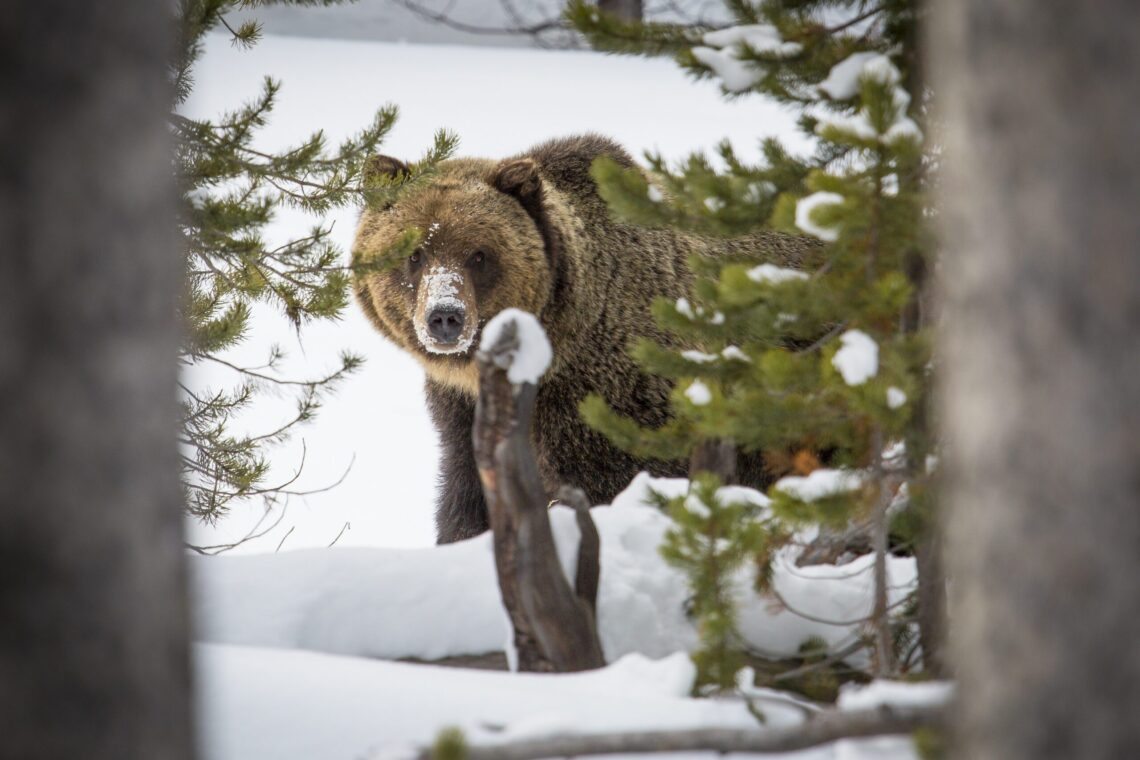Climate variation is interrupting bear hibernation
By Benjamin Alva Polley EBS COLUMNIST
In northern climates, grizzly bears and black bears typically survive cold weather by entering hibernation, a period of decreased activity during which they don’t eat, drink or defecate; their body temperatures drop, and their heart rates slow to just nine beats per minute. The duration and depth of hibernation varies depending on local climate and food availability, allowing bears to conserve energy when food is scarce.
Some scientific theories suggest that hibernation and denning behavior may be a “residual adaptation” from the Pleistocene epoch, which allowed bears to escape and survive extreme cold periods. Hibernation may not be a hard-set scientific fact like we have all been told in hundreds of books and articles written on the animal—when it comes to brown bears or black bears, no rigid rules can be set because they adapt to any accessible environment that offers food availability.
In mid-January 2024, Bozeman saw 80- to 90-degree Fahrenheit temperature changes—from minus 45 to 52 degrees. These big swings in weather can affect wildlife, especially bears, and the Custer Gallatin National Forest has documented grizzlies outside their dens this winter near West Yellowstone and Gardiner due to climate variation.
Warmer winters like the one in Montana and in the West are depriving bears of the big clue that it’s time to hibernate: cold weather. There have always been variations in winter’s severity, but as we have experienced warmer winters, later falls and earlier springs that disrupt food supplies and biological rhythms for bears, they are changing their hibernation routines. With more and more human development on the wildland-urban interface, more anthropogenic foods—like garbage, bird feeders, pet food and fruit trees—have become available for bears, which leads to more conflict with humans.
Brown bears, or what we call grizzlies in Montana, are the most adaptable of all bears in the Ursidae family. Their behaviors and genes show a high level of plasticity. Initially, they lived in places as diverse as Mongolia’s Gobi Desert and Mexico’s Sierra del Carmen and Sierra Madre Occidental, north to the boreal forest which spans the globe like a green belt through the Canadian and Russian Arctic. They are highly evolved, intelligent, resourceful and opportunistic bruins who can use their powerful body and aggressive nature to steal meals from other predators like mountain lions, bobcats, coyotes and wolves. They have a keen sense of smell, powerful humps for digging roots and forbs, claws for raking berries, and jaws that crush bones. They are highly adaptable creatures, primarily vegetarian, but can and will eat meat if available. They will also hunt young, old or winter-weakened deer, elk or moose.
Some bears are tardy to den—or don’t den—because they are starving and have no fat reserves, while other big males can be more in a state of ‘walking hibernation,’ being out and about competing for available food. This has been reported in Yellowstone National Park and in Montana’s North Fork country on the west side of Glacier National Park. In the past, I have encountered grizzly tracks in wildlife studies in late November, December, January, February and March in Glacier National Park’s North Fork Valley.
Biologists have found reasons why some bears stay awake all winter or wake from their slumbers earlier. A black bear study in Durango, CO, found that for every one degree Celsius that minimum temperatures increase in winter, bears hibernate for six fewer days. As temperatures continue to rise, bears may stay awake between 15 and 39 more days per year by the middle of this century. The study found that higher temperatures and increased food supplies decreased the time bears hibernated. This could become more widespread.
As climate variation continues to impact weather, more and more bears will stay up later each winter, rise earlier in the spring, and some may not hibernate at all. We must continue vigilance in grizzly country by properly storing garbage, ensuring bird feeders are high enough and out of reach of all bears, including bears that climb, ensuring the fruit is picked off all our fruit trees, and when traveling through bear country, realize that we may encounter them in all months of the year and that we should carry bear spray more regularly.
Bears are highly adaptable creatures who cope with change and take advantage of available resources, so it’s essential that nearby humans are not complacent in the face of these varied changes.
Benjamin Alva Polley is a place-based storyteller with stories published in Outside, Adventure Journal, Popular Science, Field & Stream, Esquire, Sierra, Audubon, Earth Island Journal, Modern Huntsman, and other publications at his website www.benjaminpolley.com/stories. He holds a master’s in Environmental Science and Natural Resource Journalism from the University of Montana.














